#ormoc bay
Text

Le destroyer USS Ward (DD-139) touché par un kamikaze – Bataille navale de la baie d'Ormoc – Bataille de Leyte – Campagne des Philippines (1944-1945) – Baie d'Ormoc – Leyte – Philippines – 7 décembre 1944
©Naval History and Heritage Command – 80-G-270773
Le destroyer coula le jour même, 3 ans après après tiré le premier coup de feu américain de la guerre du Pacifique lors d'une patrouille au large de Pearl Harbor le 7 décembre 1941.
#WWII#guerre du pacifique#pacific war#campagne des philippines (44-45)#philippines campaign (44-45)#bataille de leyte#battle of leyte#bataille de la baie d'ormoc#battle of ormoc bay#marine américaine#us navy#marine militaire#military navy#marine de guerre#navy#destroyer#classe wickes#wickes-class#uss ward (dd-139)#uss ward#dd-139#baie d'ormoc#ormoc bay#leyte#philippines#7/12/1944#12/1944#1944
6 notes
·
View notes
Text
Events 11.5 (after 1920)
1925 – Secret agent Sidney Reilly, the first "super-spy" of the 20th century, is executed by the OGPU, the secret police of the Soviet Union.
1940 – World War II: The British armed merchant cruiser HMS Jervis Bay is sunk by the German pocket battleship Admiral Scheer.
1940 – Franklin D. Roosevelt is the first and only President of the United States to be elected to a third term.
1943 – World War II: Bombing of the Vatican.
1950 – Korean War: British and Australian forces from the 27th British Commonwealth Brigade successfully halted the advancing Chinese 117th Division during the Battle of Pakchon.
1955 – After being destroyed in World War II, the rebuilt Vienna State Opera reopens with a performance of Beethoven's Fidelio.
1956 – Suez Crisis: British and French paratroopers land in Egypt after a week-long bombing campaign.
1968 – Richard Nixon is elected as 37th President of the United States.
1970 – The Military Assistance Command, Vietnam reports the lowest weekly American soldier death toll in five years (24).
1983 – The Byford Dolphin diving bell accident kills five and leaves one severely injured.
1986 – USS Rentz, USS Reeves and USS Oldendorf visit Qingdao, China; the first US naval visit to China since 1949.
1990 – Rabbi Meir Kahane, founder of the far-right Kach movement, is shot dead after a speech at a New York City hotel.
1991 – Tropical Storm Thelma causes flash floods in the Philippine city of Ormoc, killing more than 4,900 people.
1995 – André Dallaire attempts to assassinate Prime Minister Jean Chrétien of Canada. He is thwarted when the Prime Minister's wife locks the door.
1996 – Pakistani President Farooq Leghari dismisses the government of Prime Minister Benazir Bhutto and dissolves the National Assembly.
1996 – Bill Clinton is reelected President of the United States.
2006 – Saddam Hussein, the former president of Iraq, and his co-defendants Barzan Ibrahim al-Tikriti and Awad Hamed al-Bandar, are sentenced to death in the al-Dujail trial for their roles in the 1982 massacre of 148 Shia Muslims.
2007 – China's first lunar satellite, Chang'e 1, goes into orbit around the Moon.
2007 – The Android mobile operating system is unveiled by Google.
2009 – U.S. Army Major Nidal Hasan murders 13 and wounds 32 at Fort Hood, Texas in the deadliest mass shooting at a U.S. military installation.
2013 – India launches the Mars Orbiter Mission, its first interplanetary probe.
2015 – An iron ore tailings dam bursts in the Brazilian state of Minas Gerais, flooding a valley, causing mudslides in the nearby village of Bento Rodrigues and causing at least 17 deaths and two missing.
2015 – Rona Ambrose takes over after Stephen Harper as the Leader of the Conservative Party of Canada.
2017 – Devin Patrick Kelley kills 26 and injures 22 in a church in Sutherland Springs, Texas.
2021 – The Astroworld Festival crowd crush results in 10 deaths and 25 people being hospitalized
0 notes
Text
LEYTE
Leyte (/ˈleɪti, ˈleɪteɪ/ LAY-tee, LAY-tay) is an island in the Visayas group of islands in the Philippines. It is eighth-largest and sixth-most populous island in the Philippines, with a total population of 2,626,970 as of 2020 census.
The island is irregular in shape and has a rugged mountain backbone, which reaches its maximum height at Mount Lobi (4,426 feet [1,349 metres]) in the centre. A complex system of short streams drain northward to Carigara Bay or westward to Leyte Gulf. The mountains are broken by a low gap at the narrowest part of the island, there crossed by a highway. Rolling plains are found in the coastal areas, particularly in the north near Tacloban and Ormoc.
The island was known to 16th-century Spanish explorers as Tandaya. Its population grew rapidly after 1900, especially in the Leyte and Ormoc valleys. In World War II, U.S. forces landed on Leyte (October 20, 1944), and, after the Battle of Leyte Gulf, the Japanese were expelled. Because the availability of land has been exhausted, Leyte has supplied a large number of migrants to Mindanao.
(Credits to the rightful owner)
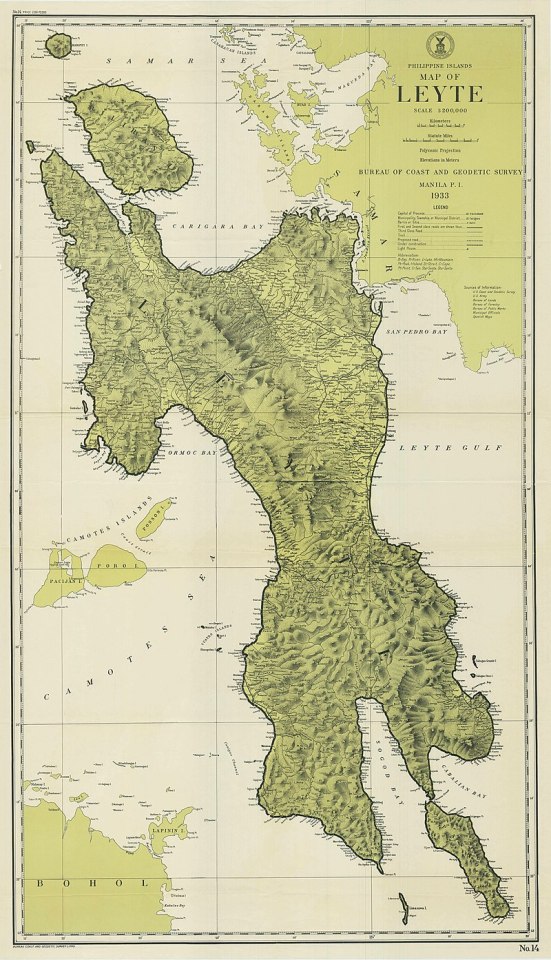
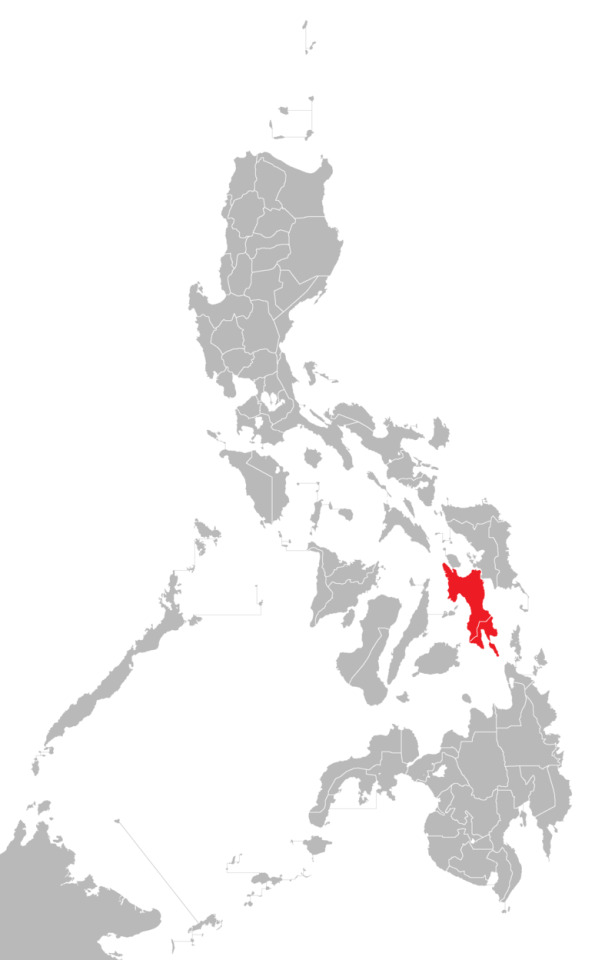
1 note
·
View note
Photo

Photos | Battle of Ormoc Bay (at Ormoc City Museum) https://www.instagram.com/p/Cnsk203hgJc/?igshid=NGJjMDIxMWI=
0 notes
Photo

Robert Burton Nett of New Haven, Connecticut, received the Medal of Honor for his actions near Cognon, Leyte, during the Battle of Ormoc Bay, on December 14, 1944 while serving as a lieutenant in Company E, 305th Infantry Regiment, 77th Infantry Division. On this day, Nett led his company in an assault against a heavily fortified Japanese position. Despite being seriously wounded in hand-to-hand fighting, he continued to lead his men until being wounded a third time. He refused medical attention until he had made arrangements for the leadership of his company. Nett later served in both the Korean War and the Vietnam War. He retired from the Army in 1978 with the rank of colonel. He was inducted into the Army Ranger Hall of Fame and the Officer Candidate School Hall of Fame. Nett died in October 2008 at the age of 86. #WeRememberThem Posted @withrepost • @wwiimemorial (at Middle Tennessee Area) https://www.instagram.com/p/CmKHKRlOf4K/?igshid=NGJjMDIxMWI=
0 notes
Text
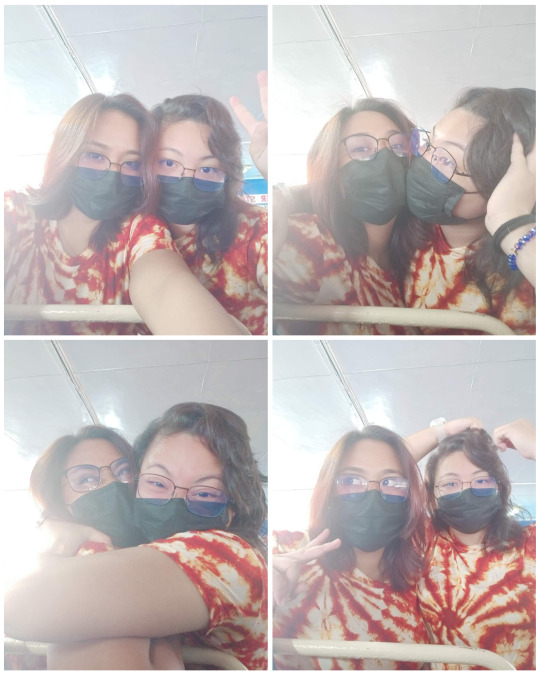
twinning with my Janine
This was on our trip back to Cebu from Ormoc.
It was sooooo spontaneous. We lined up to purchase tickets for our trip back to Cebu but they were already sold out. We had no choice but to stay overnight. We rented a room in a hotel nearby. I took Janine to Mayong's so she could taste their cheeseburger and palabok. We also went to SM and Emporium. We ended up buying twinning tops and pants. We planned on going outside at night but we fell asleep early. The next day, we made the most of our remaining time so we walked around their plaza and bay walk.
I loved this trip.
#Ormoc#trips#trip#travel#spontaneous#spontaneity#philippines#adventure#wanderlust#leyte#photography#wander#selfie#couple
1 note
·
View note
Photo
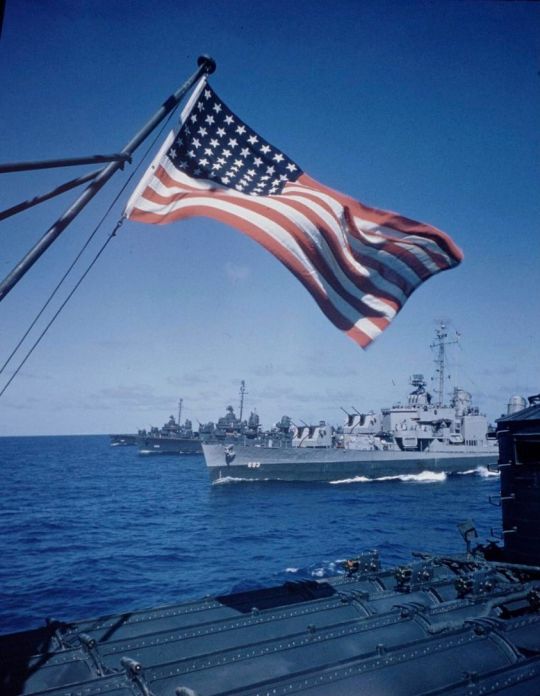
USS Moale DD-693 with other USN destroyers off of Guam in 1945.
USS Moale was the second Allen M. Sumner-class destroyer, she was commissioned in 1944, and earned Five Battle Stars for her WW2 service, including participating in the Battle of Ormoc Bay where Moale had three fatalities and 25 injured.
13 notes
·
View notes
Photo
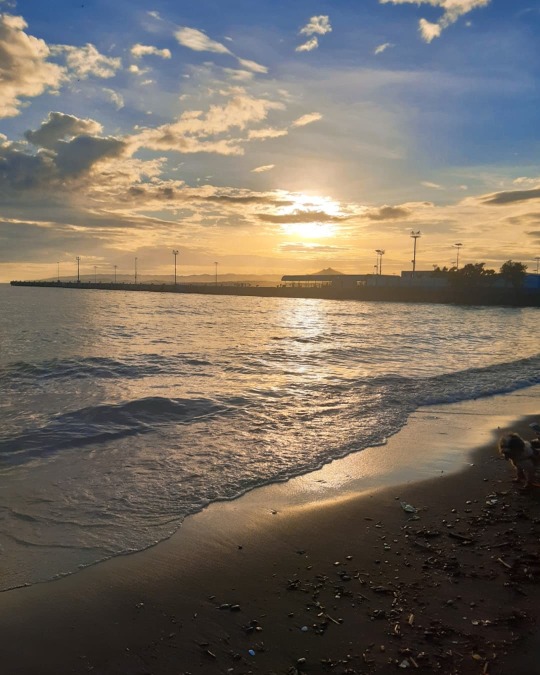
Nature is not a place to visit. It is a home ♡ (at Ormoc Bay) https://www.instagram.com/p/CYGhNIAJ9OLKwM-vkLkAI5kRHPr--5TGNeoDH40/?utm_medium=tumblr
3 notes
·
View notes
Text
QC: 7th city born during first 4 years of PH Commonwealth
#PHnews: QC: 7th city born during first 4 years of PH Commonwealth
MANILA – As Quezon City officials and residents prepare for the celebration of the 81st anniversary of the erstwhile capital of the Philippines on Oct. 12, this writer decided to conduct a research to find out how many cities were created nationwide during the Commonwealth Government from 1935 to 1946.
A glance at the website of the League of Cities of the Philippines (LCP) shows that aside from Quezon City, Commonwealth President Manuel L. Quezon established nine other cities in Luzon, the Visayas, and Mindanao during the first four years of his term and until the spread of World War II to the Philippines on Dec. 8, 1941.
Quezon was sworn in as the first president of the Commonwealth Government on Nov. 15, 1935. He died on Aug. 1, 1944, while his administration was in exile in the United States due to World War II.
QC was the seventh city created during Quezon's incumbency and the ninth since the time of the Philippine Commission in 1901.
The Philippine Commonwealth-born cities, according to their charter numbers and dates of creation, were: Zamboanga City, Commonwealth Act (CA) No. 39, Aug. 4, 1936; Davao City, CA 51, Oct. 16, 1936; Iloilo City, CA 57, Oct. 20, 1936; Cebu City, CA 58, Oct. 20, 1936; Bacolod City, CA 326, June 18, 1938; Tagaytay City, CA 338, June 21, 1938; Quezon City, CA 502, Oct. 12, 1939; San Pablo City, CA 520, May 7, 1940; Cavite City, CA 547, May 26, 1940; and Marawi City, CA 592, Aug. 19, 1940.
According to the LCP, the first two chartered cities in the Philippines were Manila, which was created by the Philippine Commission Act No. 183 of July 31, 1901, and the City of Baguio in Benguet which was declared as the "Summer Capital of the Philippines" on Sept. 1, 1909, through Philippine Commission Act No. 1963.
The Manila City Charter was amended by the Philippine Congress through Republic Act 409, otherwise known as the Revised Charter of the City of Manila, on June 18, 1949.
There was a hiatus in the creation of new cities in the Philippines after Japanese forces bombed the American naval base in Pearl Harbor, Hawaii, on Dec. 8, 1941, that eventually dragged the Philippines into World War II.
There were no cities founded during the incumbency of Presidents Jose P. Laurel Sr. (1943-1945) and Sergio S. Osmena Sr. (1944-1946), as they ruled while the country was at war with Japan. The same was true with President Emilio F. Aguinaldo (1898-1901 due to the Filipino-American conflict.
After the United States granted independence to the Philippines on July 4, 1946, the administration of President Manuel A. Roxas resumed the creation of additional cities in the country.
As of 1972, the year President Ferdinand E. Marcos declared martial law and abolished the 1935 Constitution, the Congress, and the Judiciary, there was a total of 60 cities nationwide.
Of these cities, the biggest number of 15 was founded during the 20-year rule of Marcos (1965-Feb. 25, 1986), followed by Presidents Quezon (1935-1944), Elpidio R. Quirino (1948-1953), and Carlos P. Garcia (1957-1961) with 10 each.
Former President Diosdado P. Macapagal (1961-1965) signed eight cityhood laws; President Roxas (1946-1948), four; and President Ramon F. Magsaysay (1953-1957), one.
The 15 cityhood bills approved by Marcos were those of Bais in Negros Oriental; Batangas in Batangas province; Cadiz, Negros Occidental; Dipolog, Zamboanga del Norte; General Santos, South Cotabato; Iriga, Camarines Sur; Mandaue, Cebu; Olongapo, Zambales, Oroquieta, Misamis Occidental; Pagadian, Zamboanga del Sur; Puerto Princesa, Palawan; Surigao, Surigao del Norte; Tagbilaran, Bohol; Tangub, Misamis Occidental; and San Jose, Nueva Ecija.
The 10 cities born during Quirino's time were: Butuan in Agusan del Norte; Cabanatuan, Nueva Ecija; Cagayan de Oro, Misamis Oriental; Calbayog, Samar; Dumaguete, Negros Oriental; Iligan, Lanao del Norte; Naga, Camarines Sur; Ozamiz, Misamis Occidental; Roxas, Capiz; and Tacloban, Leyte.
Those founded during Garcia's presidency were: Caloocan in Rizal (now in Metropolitan Manila); Canlaon, Negros Oriental; Cotabato, Maguindanao; Danao, Cebu; Gingoog, Misamis Oriental; Lapu-Lapu, Cebu; Legazpi, Albay; San Carlos, Negros Occidental; Silay, Negros Occidental; and Toledo, Cebu.
The eight cityhood laws signed by President Macapagal were those of Angeles in Pampanga; Bago, Negros Occidental; Dapitan, Zamboanga del Norte; La Carlota, Negros Occidental; Laoag, Ilocos Norte; Lucena, Quezon; Palayan, Nueva Ecija; and San Carlos, Pangasinan.
The four former towns that became cities during the time of Roxas were: Dagupan in Pangasinan; Lipa, Batangas; Ormoc, Leyte; and Rizal City before it became Pasay in Metro Manila.
The lone city created during Magsaysay's time was Trece Martires in Cavite.
Although not mandated by the 1987 Constitution, there was a virtual moratorium on the creation of new cities in the country during the six-and-a-half-year term of President Corazon C. Aquino (Feb. 25, 1986-June 30, 1992).
Upon the opening of the new Congress in July 1987, the people of the divided former town of Novaliches, now shared by Quezon City and Caloocan City, petitioned the House of Representatives to convert their former town into the 61st city of the country.
However, the attempt became futile due to the strong objections of the officials of both QC and Caloocan City.
The creation of new cities in the country resumed in the second year of the six-year term of President Fidel V. Ramos, who succeeded Mrs. Aquino on June 30, 1992.
Ramos spearheaded the creation of the 61st city in the country -- Mandaluyong in Metro Manila -- by signing Republic Act No. 7676 in 1994.
Not long afterward, at least seven other cities were created in the National Capital Region (NCR) by the Ramos administration. These were Pasig, Makati, Muntinlupa, Marikina, Las Pinas, Parañaque, and Valenzuela.
The other five cities of Metro Manila at present -- San Juan, Malabon, Navotas, Taguig, and Valenzuela -- were created during the succeeding administrations of Presidents Joseph E. Estrada, Gloria Macapagal-Arroyo, and Benigno S. Aquino III.
With the NCR now having a total of 16 cities, only Pateros in southern Metro Manila remains a town.
On Feb. 23, 1998, Ramos also signed RA 8535 creating the City of Novaliches, but this time, the proposal was defeated in a plebiscite held throughout Quezon City on Oct. 23, 1999.
Aside from the creation of eight new cities in Metro Manila, President Ramos was also credited with the birth of several other cities in the rest of the country.
According to the latest data from the Philippine Statistics Authority, the country now has 81 provinces, 146 cities, 1,488 municipalities, and 42,046 barangays in 17 regions.
The youngest Philippine city so far is that of Sto. Tomas in Batangas, whose cityhood law, RA 11086, was signed by President Rodrigo R. Duterte in 2018 and ratified by the local voters in a plebiscite held on Sept. 7, 2019.
Sto. Tomas is the fourth city in Batangas province after Lipa, Batangas, and Tanauan. (PNA)
***
References:
* Philippine News Agency. "QC: 7th city born during first 4 years of PH Commonwealth." Philippine News Agency. https://www.pna.gov.ph/articles/1117613 (accessed October 11, 2020 at 04:04PM UTC+14).
* Philippine News Agency. "QC: 7th city born during first 4 years of PH Commonwealth." Archive Today. https://archive.ph/?run=1&url=https://www.pna.gov.ph/articles/1117613 (archived).
1 note
·
View note
Text
The Beauty of Tacloban City
The History of Tacloban City
By Rashien Noreen Y. Gerona
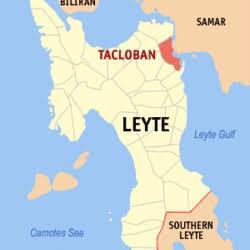
Tacloban City is in the northeastern of Leyte, Philippines and is located on San Pedro Bay at the southern entrance to San Juanico Strait. Tacloban was said to be only a small fishing village and part of Basey, Samar as one of its barrios. It is formerly known as Kankabatok, named after the first settler which was Kabatok. The place was formerly under the political administration of Palo, Leyte but under the parochial jurisdiction of Basey, Samar. During this period, Kankabatok was changed to Tarakluban from the word Taklub which is a basket-like equipment used in catching fish, crabs and the like.
In the late 18th century, the place became the trading point of the provinces because of its good location. Since it was well-sheltered and equipped with adequate facilities and had the ideal location of the port , Tacloban became the capital of Leyte on February 26, 1839.
In 1901, Colonel Murray arrived in Tacloban and became the first Military Governor of Leyte. There were several educational institutions founded in the place that is still running up to this day namely Leyte Normal School (now Leyte Normal University), Leyte High School (now Leyte National High School), Leyte Trade School (now Eastern Visayas State University), and Holy Infant Academy (now Holy Infant College).
Tacloban was an important allied logistical base during the latter stages of World War II. On October 20,1944, forces commanded by U.S. General Douglas McArthur landed at the several points along Leyte Gulf, south of the city. Tacloban City served as temporary capital of the Philippines until Manila was regained.
On June 20, 1952, Tacloban was proclaimed as a chartered city by virtue of Republic Act No. 760 signed by President Elpidio Quirino and was witnessed by the first city mayor, Mayor Ildefonso Cinco which took effect on June 12,1953.
On June 30, 1954, during the Feast day of Sto. Nino the Patron Saint of Tacloban, the Speaker of the House of Representatives, Jose B. Laurel did the honor of laying the cornerstone for the Tacloban City Hall at Kanhuraw Hill and since then, the place attracted businessmen in putting up businesses in the city.
Tacloban City became a Highly Urbanized City after holding a plebiscite on December 18, 2008, wherein 67% of the total registered voters were in favour of the conversion of the city into a highly urbanized one. With that, Tacloban City is no longer under the administrative control of the provincial government of Leyte.
I've been living in Tacloban City for almost 19 years now and this city has been my home. So if you have the time to go to this city, try to visit one of these!
1. Sto. Nino Shrine and Heritage Museum

This tourist attraction used to be the vacation home of the Philippine President Ferdinand Marcos and his wife Imelda. This was used as a venue for state dinners and gatherings by the country’s most elite with its mahogany tables and intricate ceiling mosaic. The shrine and heritage museum feels like a grand ballroom from centuries ago.
2. M/V Jocelyn Shrine

In 2013, typhoon Yolanda devastated the region of Tacloban which also took thousands of lives and demolished most of its properties. Today, the M/V Jocelyn Shrine stands as a symbol of resiliency and pays tribute to all of those who lost their lives. The ship is a symbol of remembrance and memorial.
3. Madonna of Japan

33 years after World War II, Japan gifted Tacloban this precious monument in order to honour the friendship between the Filipinos and the Japanese. The statue is a beautiful piece or art which looks like a female version of the Indian Buddha. From Madonna’s seat, you can get some magnificent views from the water.
4. Kanhuraw Hill

Home of the City Hall of Tacloban, Kanhuraw Hill has a lot to offer on a lazy day. The place is facing Kankabato Bay with grassy nooks and shady trees. You could also go along on a jog, have a picnic and watch the occasional skateboarding youths in the pavement. Around Christmas time, the local government erects a bright Christmas tree as tall as you can see with a different theme every year.
5. Pintados and Sangyaw Festivals

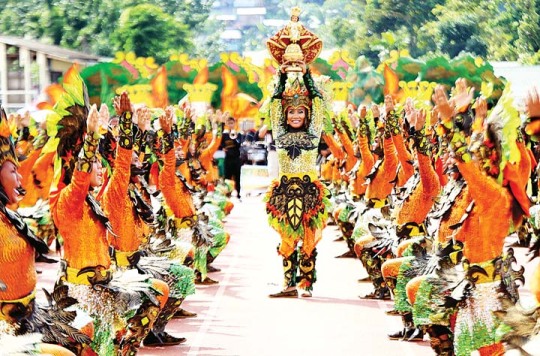
The Pintados festival celebrates the brave Waray warriors with local dressing up in indigenous costumes and colourful face paint and dancing traditional dances for the whole city to see.
In Waray, “ Sangyaw” means to “herald the news”. This festival held the day before the city-‘s festival, showcases the annual Sangyaw Parade of Lights where tens of floats and hundreds of dancers are highlighted with their lights during the night.
Both of these festivals put you up in touch with the people, culture and history of Tacloban City in a way that others don’t get to experience.
6. Try Chocolate Moron and Binagol
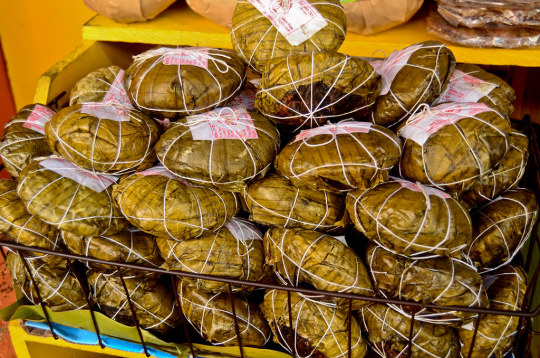
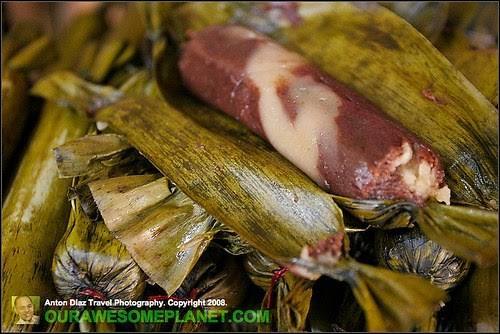
Moron is a rice that has been cooked and simmered in coconut milk, then mixed with a touch of cocoa powder. Binagol is made from the root crop called Talyan, which is crushed and mixed with coconut milk, condensed milk and sugar and then cooked like a cake, steamed in a coconut shell and wrapped in a banana leaf.
These delicacies are surely a good try!
7. Tacloban City Convention Center

Also known as the Tacloban City Astrodome, this is the second largest indoor dome in Region 8 next to the Superdome of Ormoc, Leyte. This has a seating capacity of 4,500 and is used for events like concerts, pageants and basketball leagues. This was first opened in the year 2006 and has remained standing amidst the 2013 typhoon yolanda that had only small renovations. Aside from the venue, you can also try the restaurants outside it which is very nice to go to especially at night. You can even take for a morning jog around the park while seeing the good view of the sea bay.
I hope I have convinced you to visit my city. These are just some of the fun things and places to try to so what are you waiting for? Come and visit the happiest place of our country!
2 notes
·
View notes
Text
2023 JUNE 22 Thursday
ARTHUR 1'23 #4 ~ Ref Magnet Collection
For this Thursday's random post, it's all about our ref magnet collection coming from both my own travels with or souvenir gifts from family and friends, with recent ones added for today.
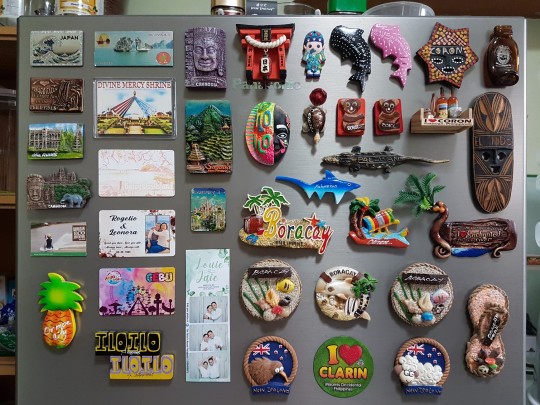
And here is a summary of our collection so far:
(Top to Bottom, Left to Right)
Japan *1 ~ Hokusai's Great Wave from my cousin Elen;
Tinago Falls, Iligan ~ from first visit to Wifey Kai's home region;
The Ruins, Ormoc ~ during my last ChE Regional Conference;
Cambodia *1 ~ souvenir gift from Kyu during family outing;
Danasan Eco Park, Danao ~ from whole family (incompleted) trip;
Ormoc City Pineapple ~ during my last ChE Regional Conference;
Halong Bay, Vietnam ~ souvenir gift from Shen2x;
Divine Mercy Shrine ~ from visit with Wifey Kai & her family;
Bulog Dos Beach, Coron ~ from wedding honeymoon with family;
Ninang Nora & Ninong Lolong ~ wedding anniversary give away;
Anjo World, Minglanilla ~ from outing with Wifey Kai & family;
Iloilo *1x2 ~ name souvenirs during my work trip to Iloilo;
Cambodia *2 ~ souvenir gift from Kyu during family outing;
Sagada ~ from a past outing;
Singapore ~ from family trip with Campos family;
(New) Louie & Jaie wedding ~ photostrip wedding give away;
Japan *2 ~ Shinto Shrine from my cousin Elen;
Iloilo *2 ~ mascara souvenir during my work trip to Iloilo;
Boracay x4 ~ gifts from Mama Tess & Ate Tonet's vacation;
New Zealand ~ kiwi & sheep ref magnet from Ate Tonet;
Korea/n ~ souvenir gift from coworker Aljon's vacation;
Coron Turtle Shell ~ from wedding honeymoon with family;
Malapascua Thresher Shark ~ from Mama's birthday outing;
Clarin ~ souvenir from Wifey Kai's DFA appointment;
Oslob ~ black & pink whale shark from Wifey Kai & family outing;
Bohol x2 ~ Tarsier wooden blocks from Miss Zyra;
Palawan ~ crocodile from Palawan trip with Trin, Noona, Steph;
Coron x3 ~ boat ref magnet, wooden mask, drink rack all from wedding honeymoon with family;
Bacolod ~ Maskara festival bottle magnet from Bacolod City;
El Nido ~ wooden mask from Palawan trip with Trin, Noona, Steph;
Enchanted River ~ from Trin & Louie's wedding outing;
Osmeña Peak ~ from Wifey Kai & family outing;
If, God-willing, our plans in New Zealand push through, then it will be a while until we are able to update this ref magnet collection that is based in the Philippines. But we will definitely continue with a New Zealand based collection based on new adventures. Let's gooo!
#A0K#A3kii Life Stream#Life Stream#ARTHUR#Anything Random#Thursday#refrigerator#fridge#ref#magnet#family#friends#travel#souvenir
0 notes
Photo

Taking it in.
1 note
·
View note
Text
66 atleta, na-ospital sa food poisoning
66 atleta, na-ospital sa food poisoning
Isinugod sa ospital ang 66 na atleta ng Eastern Visayas Regional Athletic Association (EVRAA) matapos silang malason sa inihandang pagkain sa naturang palaro sa Biliran, kamakailan.
(more…)
View On WordPress
#Farmers Medical Center#New Ormoc City National High School#Ormoc Bay#Ormoc City Health Office#Ormoc Doctors Hospital
0 notes
Photo

In-flight photo of a North American B-25C Mitchell, on ferry to be assigned to 38th BG at Hickam Field, Oahu, Hawaii, June 1942. . During World War II the 38th Bomb Group was a medium bombardment group operating in the Southwest Pacific Area (SWPA) as a B-25 Mitchell unit assigned to Fifth Air Force. It was one of the first combat organizations of the United States Army Air Forces to be deployed to the Pacific Theater when elements took part in the June 1942 Battle of Midway using the Martin B-26 Maraudermedium bomber. Operating in separated echelons until February 1943, the group was re-organized in April 1943 into a standardized B-25 unit. At the conclusion of World War II, the group converted to the A-26 (later B-26) Invader medium bomber. . The 38th Bomb Group was awarded four Distinguished Unit Citations for its combat service in Papua (Buna and Gona, 23 July 1942 to 23 January 1943); New Britain (Cape Gloucester, 24–26 December 43); New Guinea(Jefman-Samate-Sorong, 16–17 June 1944); and Leyte (Ormoc Bay, 10 November 1944). It also received recognition from the government of the Philippines with an award of the Philippine Presidential Unit Citation. . Colorized : Nathan Howland https://www.instagram.com/p/Bo_QsAMCVFk/?utm_source=ig_tumblr_share&igshid=yyz5sdrv9b7q
70 notes
·
View notes
Photo
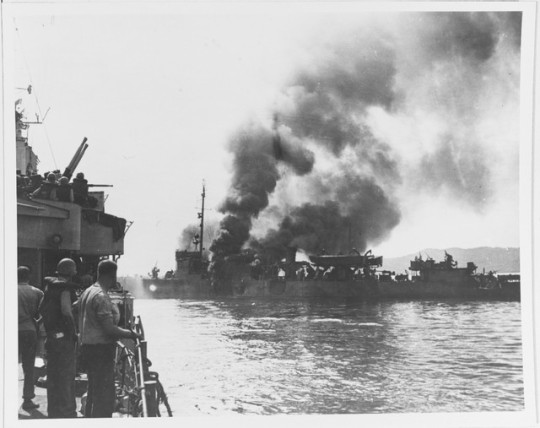
“USS Ward (APD-16) burning in Ormoc Bay, Leyte, after being struck by a Kamikaze, 7 December 1944. During the landings there.”
(NHHC: 80-G-270774)
#Military#History#USS Ward#Destroyer#Transport#United States Navy#US Navy#Kamikaze#WWII#WW2#Pacific War#World War II
19 notes
·
View notes
Text
Updated List of Domestic Destinations waiving RT-PCR tests for fully vaxxed visitors as of November 2021
Out of Town Blog
Updated List of Domestic Destinations waiving RT-PCR tests for fully vaxxed visitors as of November 2021
DOT releases latest list of domestic destinations waiving RT-PCR tests for fully vaxxed visitors
Team Out of Town Blog Hub (Outoftownblog.com) – As of November 13, 2021, the list of domestic destinations that have waived the COVID-19 test requirement for fully vaccinated visitors is fast growing; an indication that the country’s tourism industry is slowly getting back on its feet.
Domestic Destinations waiving RT-PCR photo by Lyra Joson via Unsplash
The Department of Tourism (DOT) made this statement on Saturday (Nov. 13) as it released an updated list of domestic destinations which no longer require negative results of RT-PCR tests for fully vaccinated tourists. These include popular destinations like Baguio, Bohol, Cebu, Clark, Subic, and, starting on November 16, Boracay Island and Guimaras.
In lieu of the RT-PCR test, these destinations require only vaccination cards issued by the Department of Health (DOH) or the local government unit (LGU) where the vaccination was administered.
“With the lifting of the testing requirements for fully vaccinated visitors to these destinations, travel has become more affordable and accessible for domestic tourists, especially with coming holiday season,” Tourism Secretary Berna Romulo-Puyat said.
However, she reminded tourists to observe minimum health and safety protocols when traveling.
As we expect more tourists going to Boracay Island, and other destinations that have eased travel requirements for fully vaccinated individuals in the coming weeks, we continue to remind travelers to observe minimum health and safety protocols when visiting the spots

Bernadette Romulo-Puyat DOT Secretary
Aside from travelers, Puyat also issued a reminder to tourism businesses, workers, and other stakeholders not to be complacent with the easing of domestic travel in order to prevent COVID-19 cases from increasing–an event that could halt the country’s tourism industry recovery.
“Seeing how the reopening of tourism all over the country is helping Filipinos return to their jobs, we cannot afford a new surge of COVID-19 infections and a return to the restrictions imposed by a stricter quarantine. Let us do our individual parts to ensure that there will be no outbreaks in our destinations,” she said.
She shared that in Boracay Island alone, the vaccination rate among tourism workers reached 100.2 percent for those who have received the first dose, which means more workers—who were not included in the DOT’s initial target—are now able to return to their jobs.
As of November 13, 2021, the DOT’s list of provinces that accept vaccination cards in lieu of COVID-19 tests for travelers include:
Tarlac
Pampanga
Nueva Ecija
Camiguin (starting Nov. 15)
Batangas
Oriental Mindoro
Masbate
Camarines Norte
Iloilo
Guimaras (starting Nov. 16)
Negros Occidental
Bohol
Southern Leyte
Zamboanga del Sur
Zamboanga Sibugay
Bulacan
Cebu Province
Further, the following destinations are also accepting vaccination cards as requirements for travelers:
Boracay (starting Nov. 16)
San Vicente, Palawan
Naga City, Camarines Sur
Baguio City, Benguet
Cebu City and Mandaue City
Clark Freeport Zone
Subic Bay Freeport Zone
Dingalan, Aurora
Maasin City, Leyte
Ormoc City, Leyte
Calbayog City, Samar
Mati, Davao Oriental
Visit app.philippines.travel/articles/domestic-travel-protocols for the latest updates on travel protocols in the country.
Follow Out of Town Travel Blog on Facebook, Twitter, Instagram, Bloglovin, and Pinterest if you want more travel updates.
Updated List of Domestic Destinations waiving RT-PCR tests for fully vaxxed visitors as of November 2021
Melo Villareal
Out of Town Blog
from Out of Town Blog https://ift.tt/3kxY5mC
0 notes